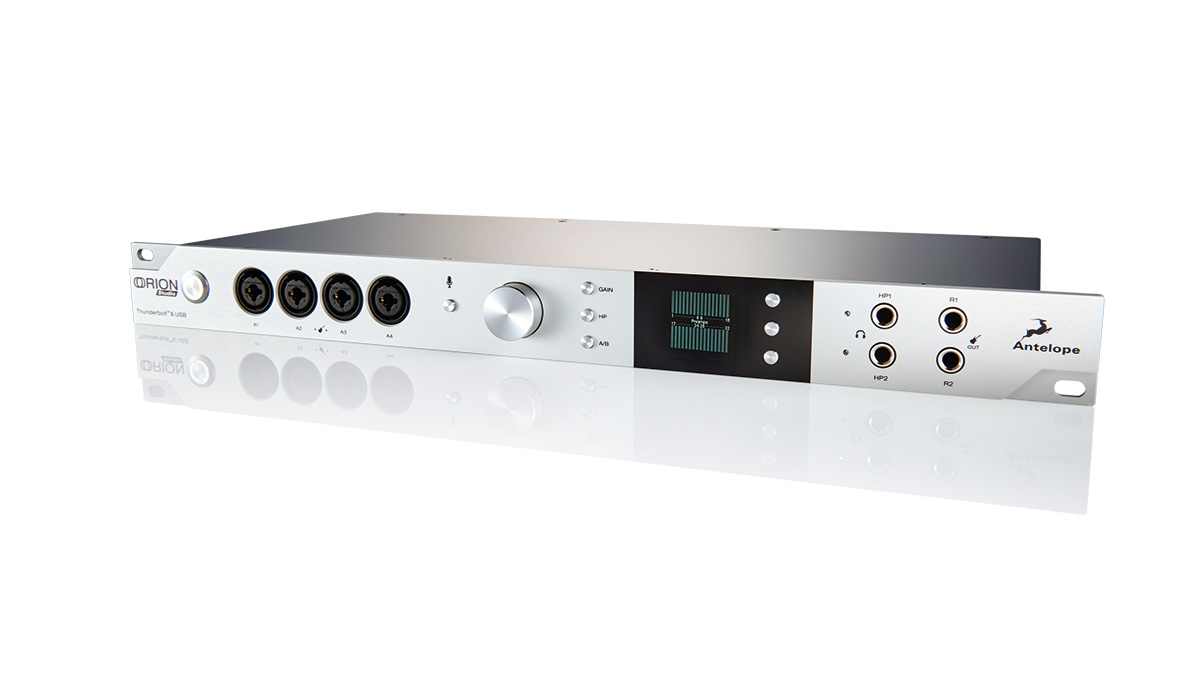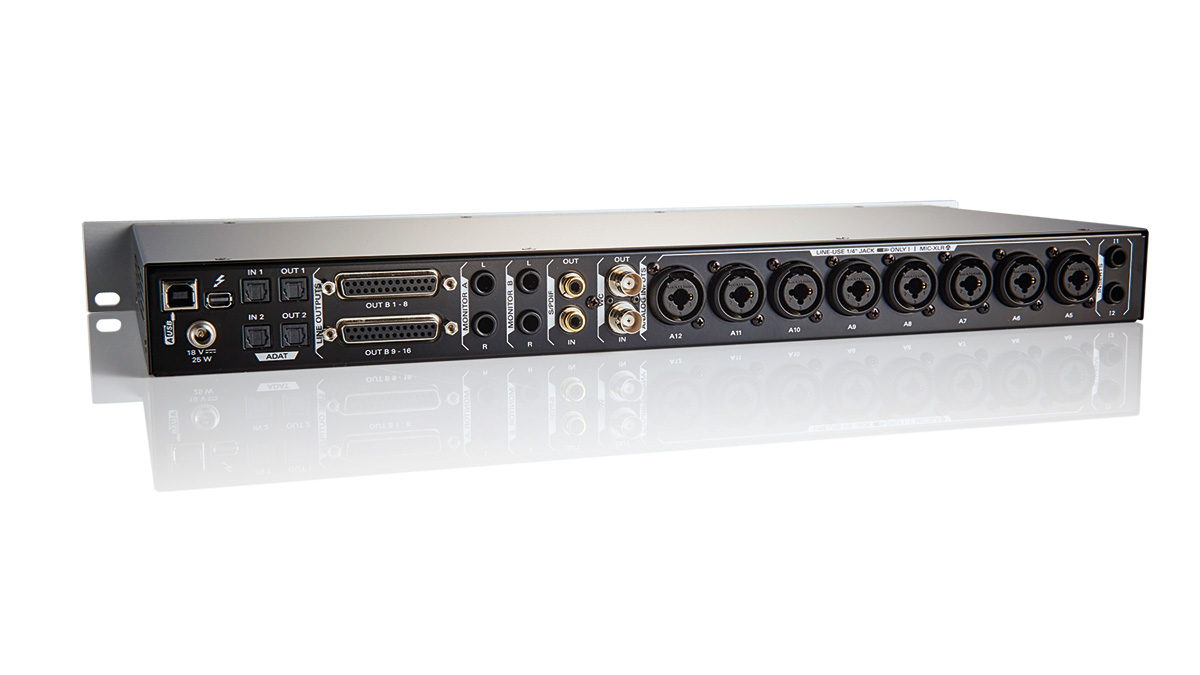MusicRadar Verdict
The Orion is without doubt one of the most flexible and best featured interfaces we have seen.
Pros
- +
Superb amp emulations and Pultecs.
Cons
- -
Very few.
MusicRadar's got your back

Antelope Orion Studio

Antelope Orion Studio
The idea of the complete digital studio in a box is something of a holy grail for the manufacturers of audio interfaces.
A laptop and a portable interface may well give you the option of recording wherever you like but it's still better to be able to treat and monitor a sound on the way in.
If you don't have the luxury of a rack full of mic pres and EQs then you can easily find yourself having to compromise on the sounds you set up and monitor as you play, as nobody wants to hear a latent sound in their cans and as soon as you have eight or ten channels of EQ and compression on inputs in a native system you will need to significantly up your buffer size.
Antelope already have a few products with onboard DSP but the Orion has been designed with the musician or band in mind.
Lets's start with the physical features. On the front panel you have four dual XLR/TRS inputs, two independent headphone outs and two re-amping outputs. There is one control knob and then three switches dedicated to mic pre control and monitor switching, and then three soft switches.
To the rear you get a further eight dual XLR/TRS inputs plus monitor A and B outs (TRS) and two d-sub connectors providing line outputs 1 through 16. Digital connections include S/PDIF in and out, word clock in and outs and two ADAT inputs and outputs. Finally there is a screw-in connector for the external power supply and the Thunderbolt and USB sockets.
So, plenty of connectivity and a sensible layout. Each of those front panel inputs can be mic, line or hi-Z (instrument DI), and the re-amp outputs are there too, as are the headphone sockets. For most applications those are the connections you will need to change regularly and having them on the front panel makes them instantly accessible.
Want all the hottest music and gear news, reviews, deals, features and more, direct to your inbox? Sign up here.
All of the connectivity needs to be managed somewhere and this is where the software comes in. We installed this on two machines - on my laptop it was very simple; on the studio computer we ran into trouble but Antelope's Tech support were excellent and sorted the problems for us via Skype and Teamviewer. Good to know you have backup that works (and it's free).
The first thing you have to get to grips with is the routing matrix. This is understandably complex as there are a lot of connections to deal with. There are connection points for all physical ins and outs but also for the internal DSP channels and the four internal mix busses.
The flexibility this gives is huge but you do have to give yourself time to understand it or you can get into quite a muddle. On a tracking session you could set up all 12 mic inputs each running through its own DSP processor going to individual inputs of your DAW while having up to four separate latency-free monitor mixes for individual musicians. In effect, this is like tracking through a recording console with the added flexibility of being able to save and recall the whole session.
The DSP side of the system has a compressor, emulations of Pultec mid and full range EQs, a reverb and three guitar amp emulations. These amps are based around a Vox AC30, a Blackface Fender and a modern Hi Gain (think Boogie).
The Pultecs are excellent and in tandem give you a great full range EQ. The compressor is powerful and quite coloured so it may not suit every application but, what it does, it does very well.
The Amp emulations are also very good. They don't sound particularly digital and, despite there only being three of them, they cover the full range of warm and clean through crunch and wild distortion.
The quality of the mic pres and convertors is excellent as you would expect from a company with Antelope's reputation. As with any piece of complex gear you are going to have to spend time to figure out how to get the best from it, but as the centrepiece of a music production system it will give you all the flexibility you need.